Good fun, parties and parties are everyday life for some people - and not from today. In past centuries, people also had a lot of fun. Alcohol poured in streams, food was counted in tons, and money - on wagons. Some cravings were really impressive ...
As always, all positions in the TOP10 ranking are based on the articles we publish. This time we have selected 10 texts that represent feasts, games, drunkenness or balls. You can find more about everyday life HERE.
Some people did not know moderation…
10. Joseph Stalin and the Politburo
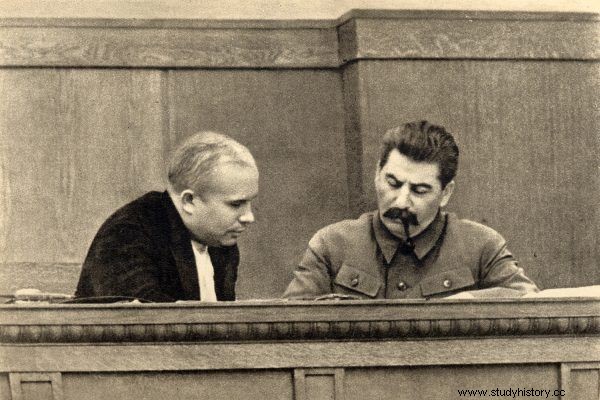
Stalin and Khrushchev - still at work…
The elite of the Soviet people could entertain themselves day in and day out. Stalin - after he had already got rid of his own family - was actually condemned for most of the day to the company of people he despised.
After a whole day of work, he invited him to evening meetings at the Kremlin or the dacha in Kuncewo, he had him dance to his favorite song, the Georgian "Suliko", which was played endlessly. The invitation meant a night of drunkenness and dancing, no invitation - could suggest much worse plans ... (more on that here).
9. Emperor Bokassa I
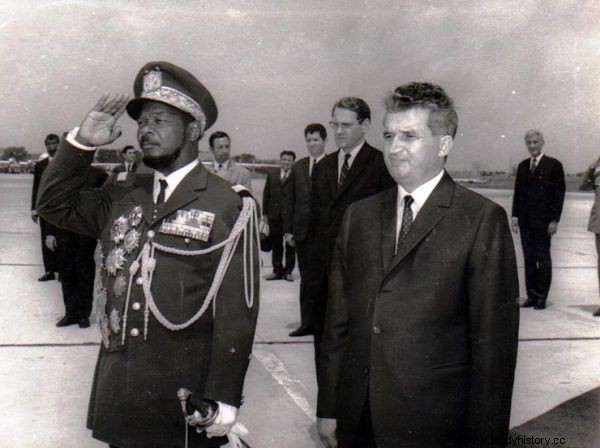
Bokassa and Cauceascu
For several years the Central African Republic was ruled by ... the emperor. That's right - Jean Bedel Bokassa overthrew his cousin's rule in 1966 and, with the help of the French, seized power. After a few years he decided - following the example of his idol, Napoleon Bonaparte - to proclaim himself emperor.
And in this case, France turned a blind eye to the frills of the cacique, because it wanted access to uranium deposits. The coronation of Emperor Bokassa I cost $ 20 million (including 240 tons of food, as was carefully calculated), the execution of regalia - 5 million, the empress's dress 72 thousand. Meanwhile, an ordinary citizen of the new Central African Empire had to survive on $ 1 a day ... (more on that)
8. Race of royal chefs
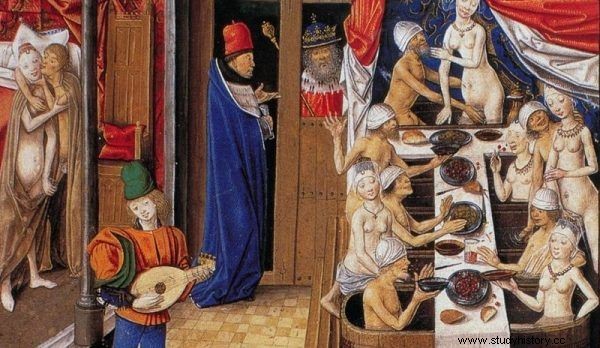
The royal feasts of France are remembered to this day
In medieval France, there was a real rat race between cooks. At stake was praise, favor, and sometimes also nobility. It is known that kings could afford a lot, so the level of such competition had to be exceptional:when one managed to make an impression by making roasted meat look raw - the other had strings of lyre and throwing it on the meat to make it look like creeping worms.
In general, people had a momentum - at the famous Feast of the Pheasant, Philip III the Good, announcing the plans for a crusade against the Turks, welcomed guests with 9,000 loaves of bread, 32 barrels of wine, 800 pates, over three thousand baked pigs and calves, 1,400 hares and the title live pheasant. (more on that)
7. " A shoemaker, tailor and any other craftswomen, covered with a mask, played around with men" ...
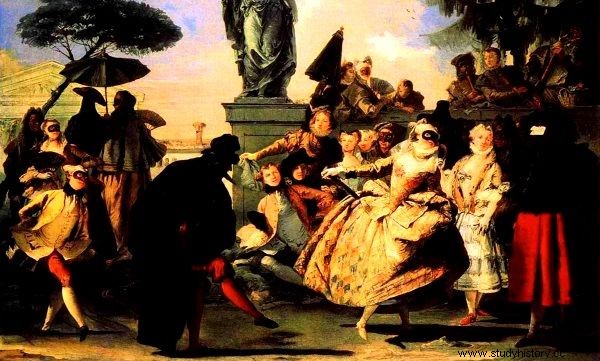
They were partying in disguise, with or without clothes…
The famous Jędrzej Kitowicz comments on masked balls in the Saxon times. Apparently, everyone could take part in them, provided that they paid the appropriate fee. During such balls, people dressed up as monks, coachmen, Cossacks, devils and Jews.
The women pretended to be Jewish, Ruthenian peasants, Turks or peasants. Therefore, costumes of plebeian character prevailed, the preparation of which did not require spending a fortune. Such balls - called redoubts - were "a theater of luxuries and licentiousness," as Julian Ursyn Niemcewicz put it, and also a popular occasion to "kidnap" someone else's wife or daughter. you can learn more about it here
6. For King Sax…
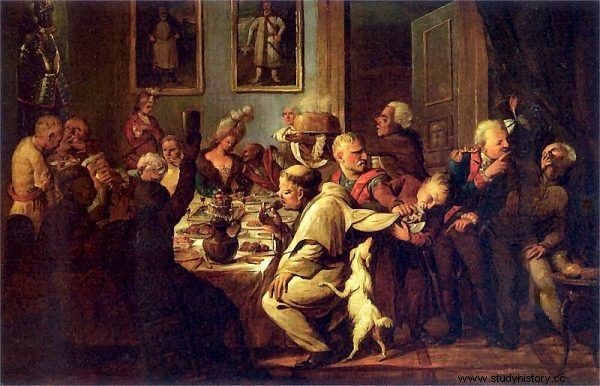
A feast at the Radziwiłł court (painting by A. Orłowski)
Speaking of the Saxon times, it is impossible not to mention the release of the belt. Until today, this saying is probably the first association with the first decades of the 18th century in the Polish-Lithuanian Commonwealth. In recent years, research into the kitchen of the old days has developed a lot. Contrary to what was imagined, the former magnates consumed not only fatty, roasted meats.
A large part of the year consisted of fasts that you had to get used to somehow. And so, when most of the inhabitants ate sour rye soup and herring, the richer ones actually cheated by eating fish in fancy ways:gooseberries, anchovies, pine nuts, truffles; blue, gray; boiled, chopped ... (more delicacies and delicacies)
5. Where priests and carters drink, the best beer is there
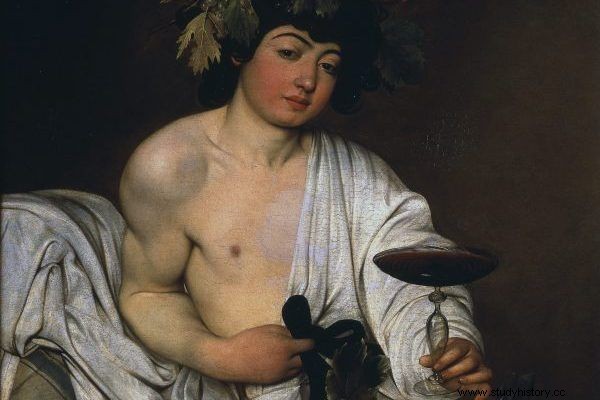
Bacchus according to Caravaggio
Once we've eaten, we'd have to wash it down with something. The hour does not matter here, it happened that breakfast was crowned with a modest sip of booze. On the other hand, we must remember that alcohols of that time (seventeenth and eighteenth century) were often much weaker. Weak wines (thin wines) and light beers (including Grodzisk beer later considered to be Polish style) were popular. For many years booze was available only to the richer - until its production from potatoes became popular. (more popitki here)
4. Retro party
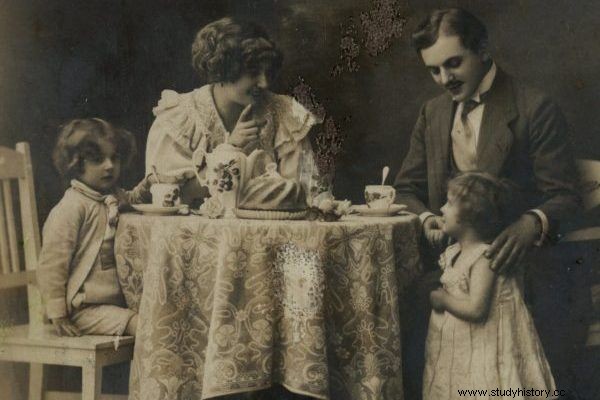
Best wishes, name day
The elites of the Second Polish Republic also liked games. At a time when modernization was raging, and many of the old customs were still present, the approach to feasts was somewhat different. There were quite a few publications on how to organize receptions. Because, as it turns out, not that simple!
The dinners themselves could be divided into as many as five categories:a modest everyday dinner, a "makeshift" dinner cooked quickly on the stove after returning from work, among other duties, a daily dinner eaten in the later evening hours, a sumptuous evening dinner and a dinner party ... (more details about salt shakers, decanters and sugar bowls here)
3. Banquet at the minister's
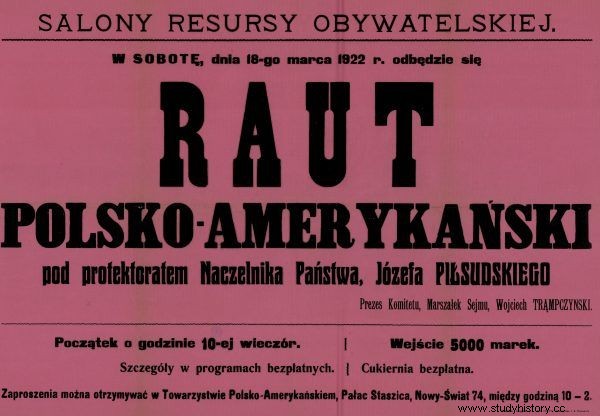
Raut-dream for Nikodem Dyzma…
If you were a member of an elegant society, it was considered good to receive visits to your home on certain days of the week and month. The hostess herself set these fixed dates and thus undertook that she would be present and at the disposal of her guests. On the other hand, many of those who not so long ago wandered around the musty halls printing illegal newspapers, now attended presidential receptions. (on how to become Nikodem Dyzma - read more here)
2. Yalta conference
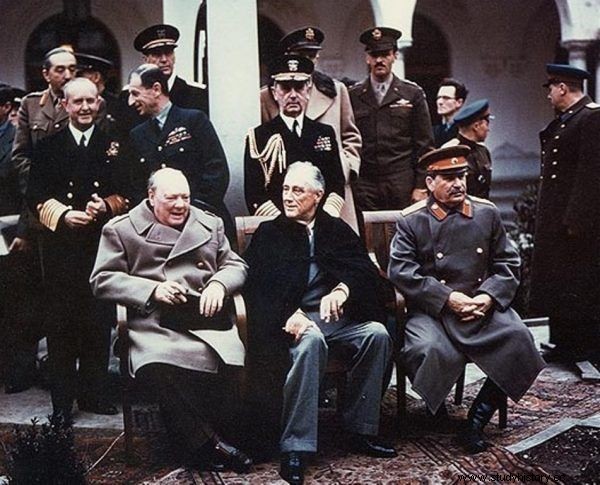
Participants before or maybe after the next feast
It seems that the meeting of the heads of world powers should be held in a palace dripping with gold. During such a meeting in Yalta in 1945, it was different with hygiene and luxury. However, there was also food and alcohol. As Lord Moran, Churchill's personal physician, recalled, the tables there were full of caviar, smoked salmon and all kinds of drinks.
Indeed, on February 8, Stalin organized an unusual party. On a large table for thirty people, various types of caviar, patties, Atlantic salmon, beluga, smoked and salted herring, mullet, white fish in champagne were served first. Then it was time for a cold pig, venison broth, chicken cream ... (if you want to know what else they ate in Yalta - check it out)
1. Joy overshadowed by tragedy
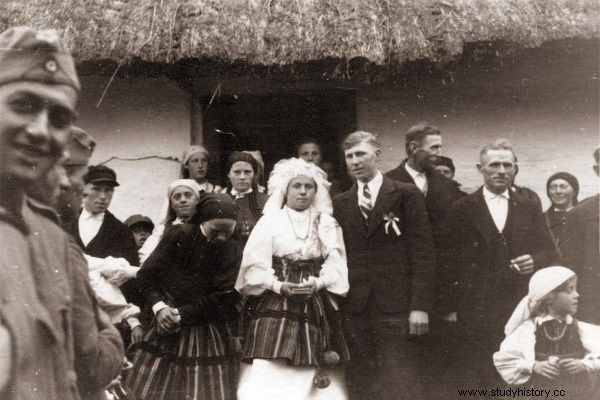
A peasant wedding in Radzice near Drzewica, 1940.
The war continued, but young people in the occupied country did not stop falling in love. When they thought they had found their significant other, only one thing remained - they had to notify their parents and prepare the wedding. In Poland cramped by a German boot, the preparation of a traditional wedding feta, with tables full of all kinds of food, was complicated to say the least. But that was also dealt with. find out how here
